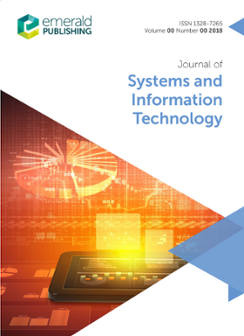Table of contents
Perception deception: security risks created by optimistic perceptions
Richard G. Taylor, Jeff Brice, Jr., Sammie L. RobinsonThe purpose of the paper is to determine whether management’s optimistic perceptions of their organization’s level of information security preparedness can ultimately result in…
Bridging the edtech evidence gap: A realist evaluation framework refined for complex technology initiatives
There are five factors acting as a barrier to the effective evaluation of educational technology (edtech), which are as follows: premature timing, inappropriate techniques, rapid…
Achieving adoption and effective usage of Web 2.0 among employees within Australian government organizations
Mohd Heikal Husin, Nina Evans, Gaye DeeganEnsuring effective usage of Web 2.0 within government organisations is not as straightforward as it seems. The organisations should be aware of a number of issues when…
A six-stage framework for evolutionary IS research using path models: Conceptual development and a social networking illustration
Ned Kock, Murad MoqbelThe purpose of this study is to fill a gap in evolutionary theorizing in the field of information systems. Evolutionary theorizing has recently been added as a useful tool to the…
Understanding Twitter as an e-WOM
Umesh Rao Hodeghatta, Sangeeta SahneyThis paper aims to research as to how Twitter is influential as an electronic word-of-mouth (e-WOM) communication tool and thereby affecting movie market. In present days, social…

ISSN:
1328-7265e-ISSN:
1758-8847ISSN-L:
1328-7265Online date, start – end:
1997Copyright Holder:
Emerald Publishing LimitedOpen Access:
hybridEditor:
- Professor Sujeet Sharma